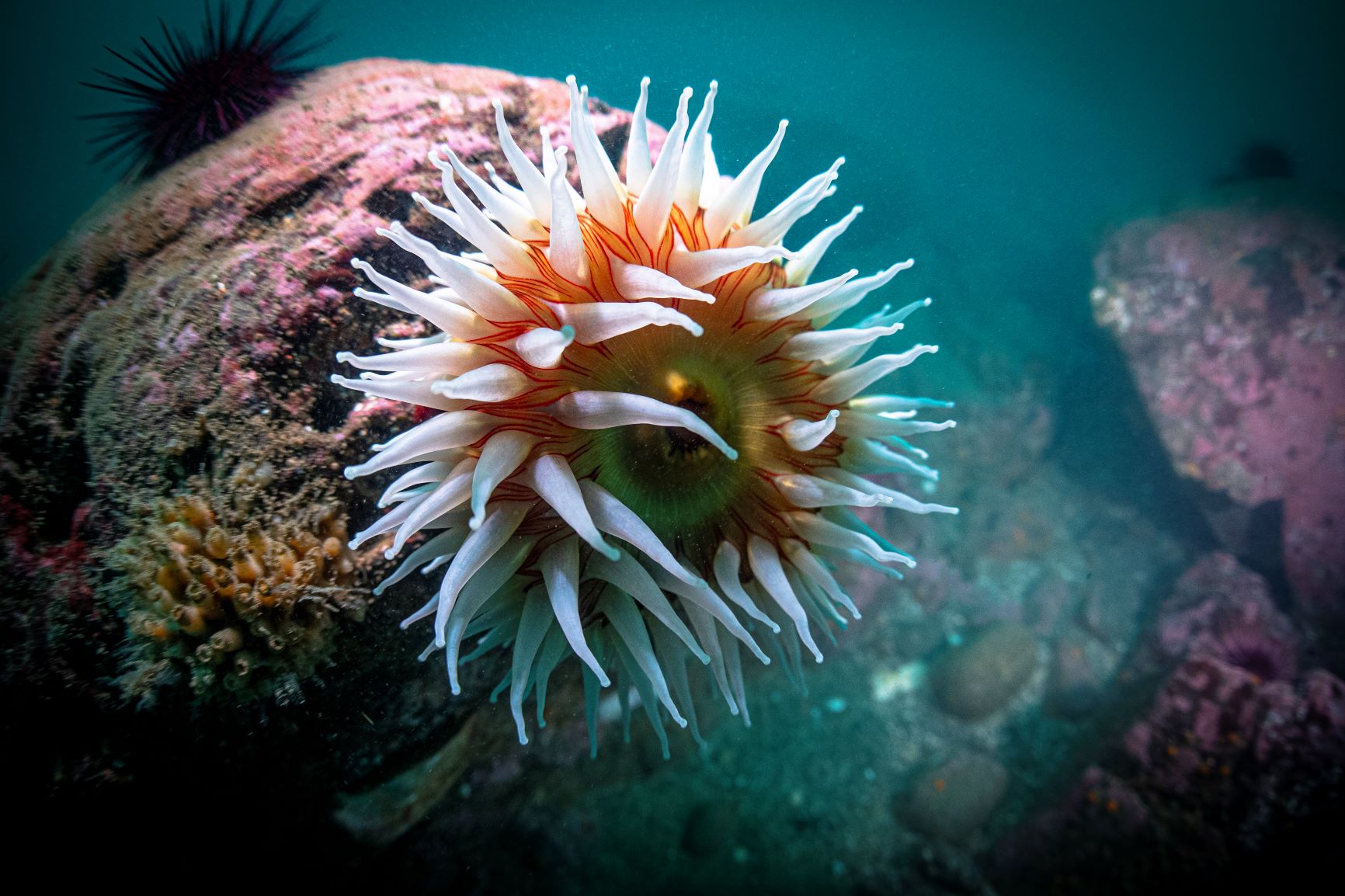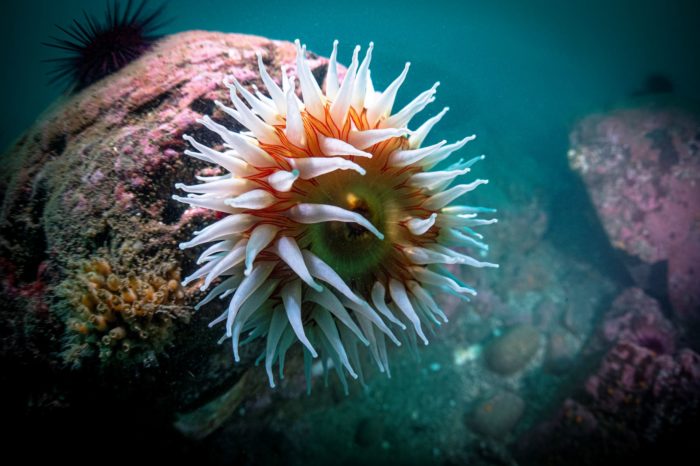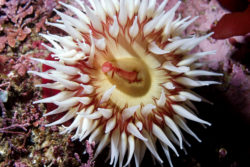
Sea Wonder: Fish Eating Anemone

Photo Credit: Nick Zachar
It might look like a kind and gentle underwater plant but the fish eating anemone (Urticina piscavora) is actually a species of predatory marine invertebrate. They’re even described as semi-aggressive. Watch out fishes!
Appearance
The fish eating anemone can grow to be about eight inches tall and 10 inches in diameter, but they grow and shrink throughout their lifetimes based on food availability. They are characterized by an orange, cylindrical body topped by an oral disc and white tentacles. Their bodies are made entirely of soft tissue, including a soft, adhesive “foot” at the base so it can securely attach to its environment.
Diet and Habitat
Fish eating anemones live in the rocky intertidal zone of the Eastern Pacific Ocean from Alaska to Southern California, including in and near America’s west coast national marine sanctuaries from Olympic Coast to Monterey Bay and down to the Channel Islands. The deepest waters in which they are found are about 160 feet deep, but they often live in much shallower areas.
The fish eating anemone feed upon shrimp and other invertebrates and (as their name suggests) small fish, which they catch with their tentacles. To feed, they sting victims that venture too close to their tentacles, either killing or paralyzing them with nematocysts, specialized cells that contain fibrous thread coated with venom or with a barbed tip. Once the prey are in their grasp, food moves from the tentacles to the mouth where it is transferred to the digestive cavity, their equivalent to a stomach.

Photo Credit: Chad King/NOAA
Life History
Fish eating anemones reproduce both asexually through splitting and sexually by releasing sperm and eggs into the water column. Asexual spawn are genetic clones of their parents while sexually produced offspring are genetically different and experience a full lifecycle from planktonic larvae that metamorphosize into juveniles and then adults. Adults tend to be territorial and are thus often found living alone. They can move but tend to stay put when food is readily available. The estimated maximum lifespan for individual anemones is between sixty and eighty years old.
Threats and Conservation
Populations of fish eating anemones are thought to be generally stable, but they are harmed by fishing methods like trawling, as well as rising ocean temperatures, ocean pollution, and coastal development. Ocean acidification may also indirectly affect fish eating anemones as it impedes the growth and survival of animals on which they feed such as shrimp and other invertebrates that rely on exoskeletons.
